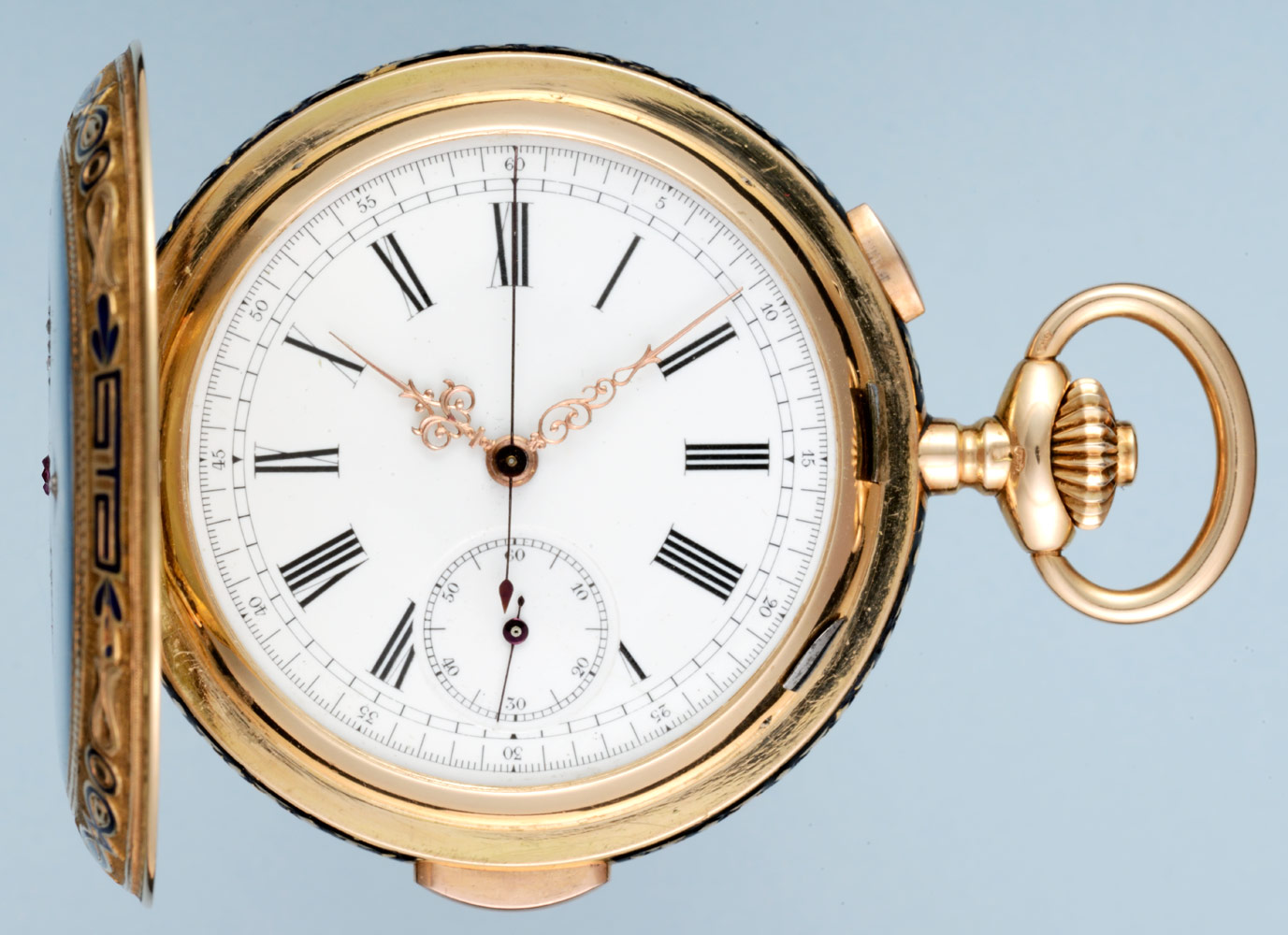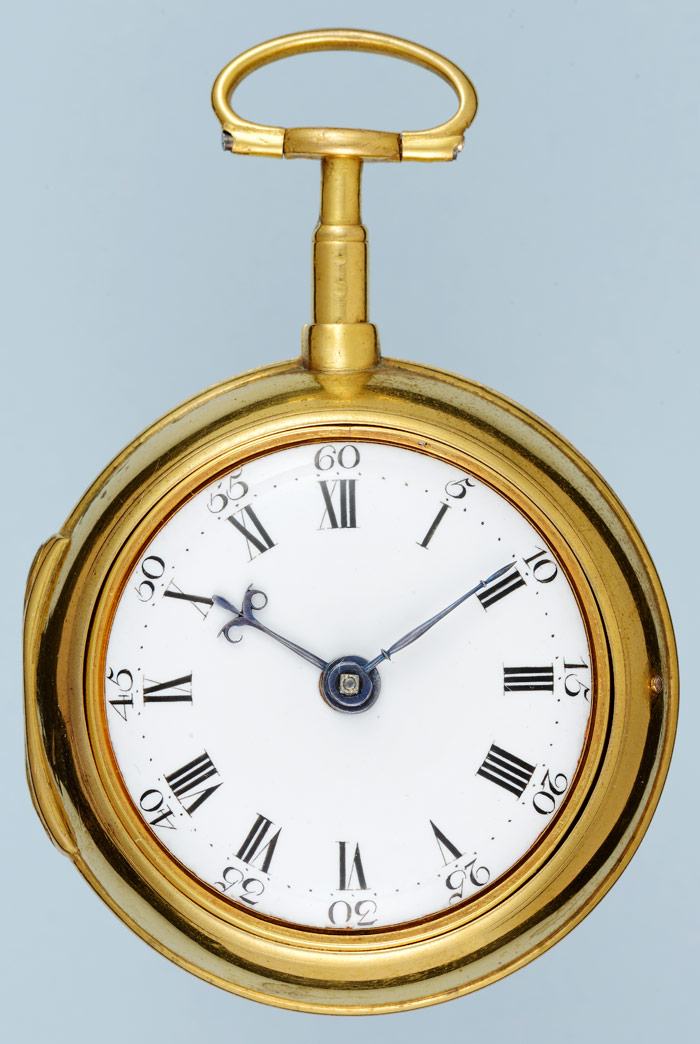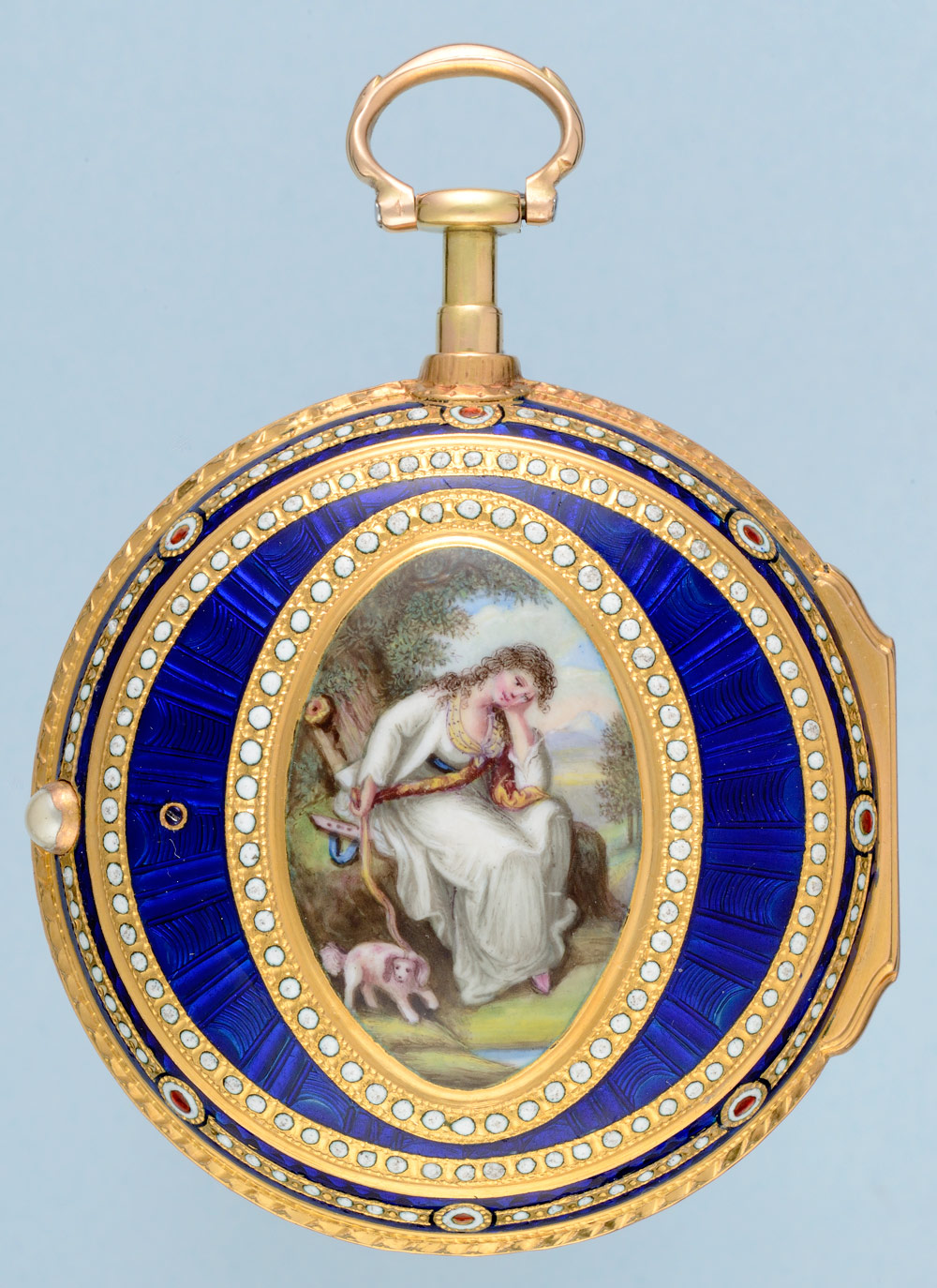Description
A fine early 20th Century Swiss minute repeating chronograph in a gold and enamel full hunter case bearing the portrait of the King of Persia. Gilt split three quarter plate keyless movement with going barrel. Grained steel flyback chronograph work above the plate. Plain cock with polished steel regulator, compensation balance with blue steel overcoil hairspring. Club foot lever escapement. Push button minute repeating on two polished steel gongs, visible repeat train regulator. White enamel dial with flyback centre seconds, continuous subsidiary seconds, Roman numerals, blue steel seconds hands, pierced gilt hands. Fine 14 carat full hunter case, both covers decorated in polychrome enamel. The front cover depicting a portrait of the 5th Shah of Persia, Mozaffar ad-Din Shah, in his uniform as Commander-in-chief of the Persian Guards, wearing a feathered hat and holding an ornamental sabre. The hat and epaulettes are set with diamonds and the sash with three small rubies. The back cover bears the Lion and Sun emblem of Persia on a dark blue enamel ground. Gold cuvette and glazed cover to the movement.
A rare watch in excellent overall condition. Mozaffar ad-Din Shah Qajar, 23 March 1853 3 January 1907) was the fifth Qajar king of Persia. He reigned between the years 1896 and 1907. The son of the Qajar ruler Naser al-Din Shah Qajar, Mozaffar ad-Din was named crown prince and sent as governor to the northern province of Azarbaijan in 1861. He spent his 35 years as crown prince in the pursuit of pleasure; his relations with his father were frequently strained, and he was not consulted in important matters of state. Thus, when he ascended the throne in May 1896, he was unprepared for the burdens of office. At Mozaffar ad-Din's accession Persia faced a financial crisis, with annual governmental expenditures far in excess of revenues due to the policies of his father. During his reign, Mozzafar ad-Din attempted some reforms of the central treasury; however, the previous debt incurred by the Qajar court, owed to both England and Russia, significantly undermined this effort. He had to make up the existing deficit by contracting more unpopular loans from Russia, which exacted political concessions in return. Like his father he visited Europe three times. During these periods, on the encouragements of his chancellor Amin-os-Soltan, he borrowed money from Nicholas II of Russia to pay for his extravagant traveling expenses. During his first visit he was introduced to the “cinematographe” in Paris, France. Immediately falling in love with the silver screen the Shah ordered his personal photographer to acquire all the equipment and knowledge needed to bring the moving picture to Persia, thus starting Persian cinema. Additionally, in order to manage the costs of the state and his extravagant personal lifestyle Mozzafar ad-din Shah was forced to sign many concessions, providing foreigners with monopolistic control of various Persian industries and markets. One example being the D'Arcy Oil Concession. Widespread fears amongst the aristocracy, educated elites, and religious leaders about the concessions and foreign control resulted in some protests in 1906. These resulted in the Shah accepting a suggestion to create a Majles (National Consultative Assembly) in October 1906, by which the monarch's power was curtailed as he granted a constitution and parliament to the people. He died of a heart attack 40 days after granting this constitution and was buried in Masumeh shrine in Qom. The Lion and Sun emblem was used from 1846 to 1980. (Source Wikipedia).










